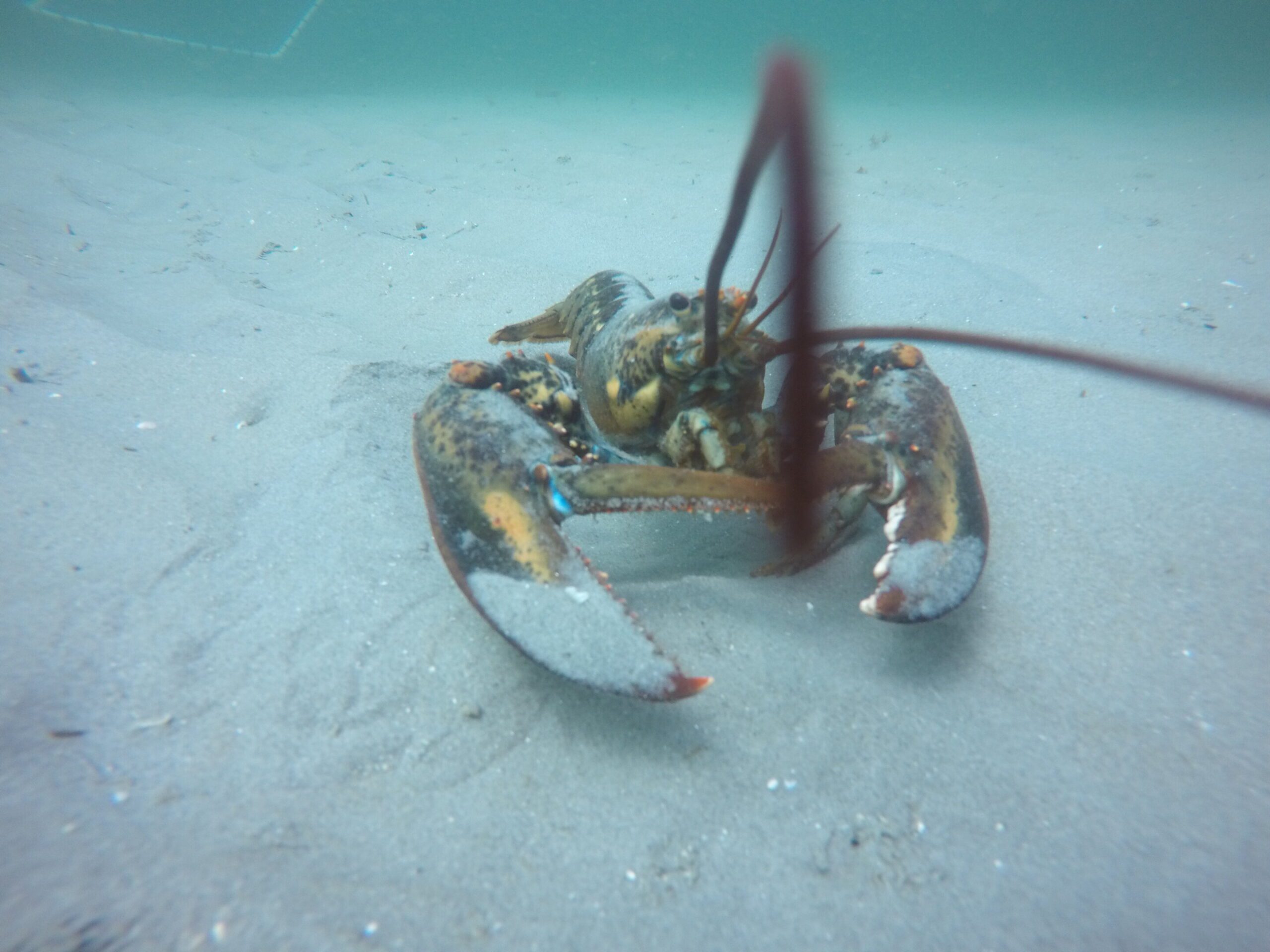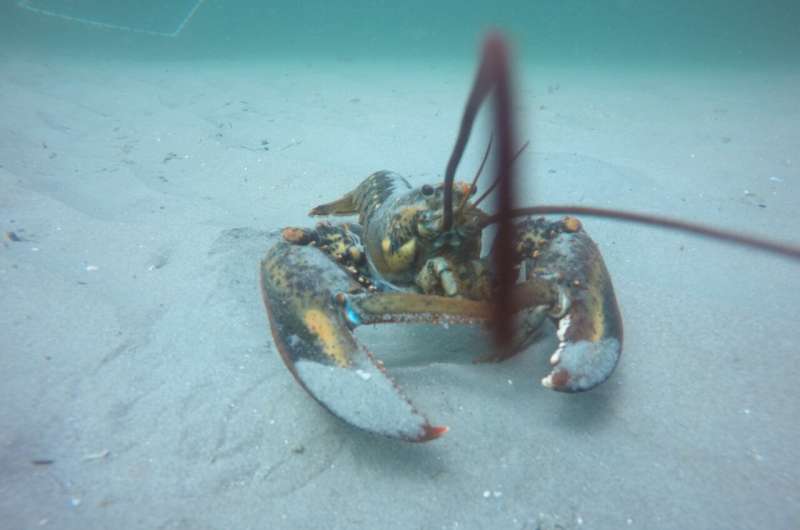

American lobsters along Maine’s coast have relocated to new habitats, while the population simultaneously shrunk in abundance and grew older, according to a new study by University of Maine researchers.
For decades, the vast majority of adult lobsters resided in boulder shelter habitats. This knowledge helped inform longtime conservation efforts and regulations within the more than $740 million fishery.
A team of UMaine scientists, however, found that from 1995–2021, occupancy of boulder habitats dropped 60%. Meanwhile, the number of lobsters residing in sediment or featureless ledge habitats, both of which have little to no geological features to use as shelters, increased 633% and 280%, respectively. Lobster population density across all types of habitats declined too, meaning they are fewer in number and their populations are more spread out.
Water temperatures increased nearly 3 degrees Celsius from 1995–2021 across these habitats, according to researchers, showing how lobsters and their habitats are changing with the climate. Kelp abundance declined across lobster habitats, while diminutive algal turfs—small green mats containing multiple species of algae—increased.
“These differences in the way lobsters use their habitats provide context for the lobster stock assessment that helps to determine the health of the entire lobster population,” said Robert Jarrett, lead author of the study and marine biology Ph.D. student.
“Some of the annual lobster surveys used in the assessment, like those from the Maine Department of Marine Resources, are restricted in the types of habitats that they can sample, so these findings about habitat help fill in some information gaps and show that over time the lobsters may be shifting between which surveys catch them better.”
Jarrett and his colleagues published their findings in the journal Marine Ecology Progress Series. Co-authors include Damian Brady, Agatha B. Darling Professor of Oceanography; Richard Wahle, former director of the Lobster Institute, and Bob Steneck, professor emeritus of oceanography, marine biology and marine policy.
The team investigated 20 sites along Maine’s coast, from York to Jonesport. They dove 10 meters below the surface to count and measure lobster, as well as to collect data on habitat and temperature. The team also reviewed historic data for the same sites dating back to the 1990s.
While overall population density has declined, the mean size of an adult lobster was greater in 2021 than in 1996. According to the study, the increase in mean size is partially the result of fewer juvenile lobsters residing in these habitats. While lobsters in the Gulf of Maine are now larger, the team observed that the majority, or 93%, were still smaller than 83 millimeters, the minimum legal size to be caught and sold—a promising sign for the fishery.
Lobsters are also now favoring open spaces within their habitats over rocky shelters than previously. The percentage of lobsters living under rocky shelters dropped 34% from 2000–2019, while those using no shelter at all increased 168%. The number of lobsters that reside underneath beds of algae have also grown 160%.
According to researchers, demographic shifts among Gulf of Maine lobsters—habitat, size and population density—may have resulted from a drop in baby lobsters surviving to the seafloor and less competition between individual lobsters. The lack of predators might have also influenced more lobsters to move away from boulders to more open habitats, forgoing rock shelters for cover with only algae to hide under.
“When you consider that this is one of the best studied commercially important marine species in the world, it is stunning that we keep getting surprised by our iconic lobster,” Steneck said.
This study is the latest example of how UMaine students and faculty are preserving and propelling the state’s blue economy, industries that use ocean resources for economic growth without jeopardizing the environment.
Through innovation and workforce development, the university broadens insight into ecological and sociological changes that affect the state’s coastal communities and businesses. Its faculty and students are also exploring opportunities for new sectors and markets and investigating potential resources to mitigate the ramifications of climate change.
Bolstering these efforts is the UMaine Marine Aligned Research, Innovation, and Nationally-recognized Education (MARINE) Initiative, which fosters collaboration and synergy among researchers, industry, government and communities. Together, they integrate and innovate transdisciplinary marine research, education and outreach to enhance the socioeconomic well-being of people in Maine and beyond.
“This study exemplifies how the University of Maine supports Maine’s blue economy. In a changing Gulf of Maine, sustainable management of the largest fishery in North America requires better understanding how lobsters are using habitat,” said Brady.
More information:
II Jarrett RN et al, Shifts in habitat use and demography of American lobsters in coastal Maine (USA) over the past quarter century, Marine Ecology Progress Series (2024). DOI: 10.3354/meps14691
Provided by
University of Maine
Citation:
American lobster population and habitat preferences shifting, study finds (2024, October 18)
retrieved 18 October 2024
from https://phys.org/news/2024-10-american-lobster-population-habitat-shifting.html
This document is subject to copyright. Apart from any fair dealing for the purpose of private study or research, no
part may be reproduced without the written permission. The content is provided for information purposes only.